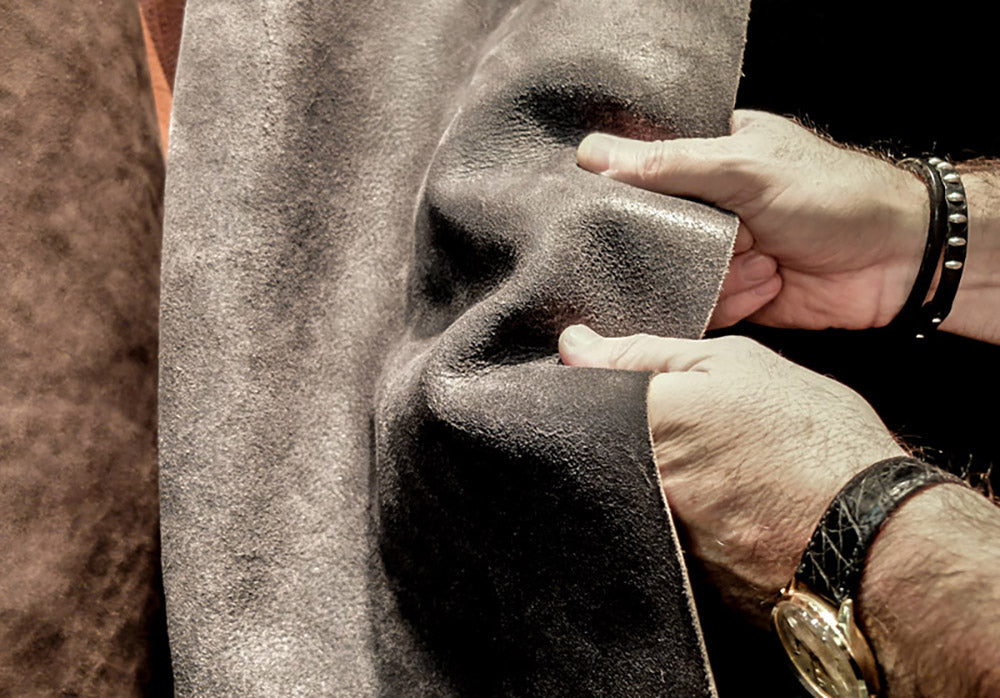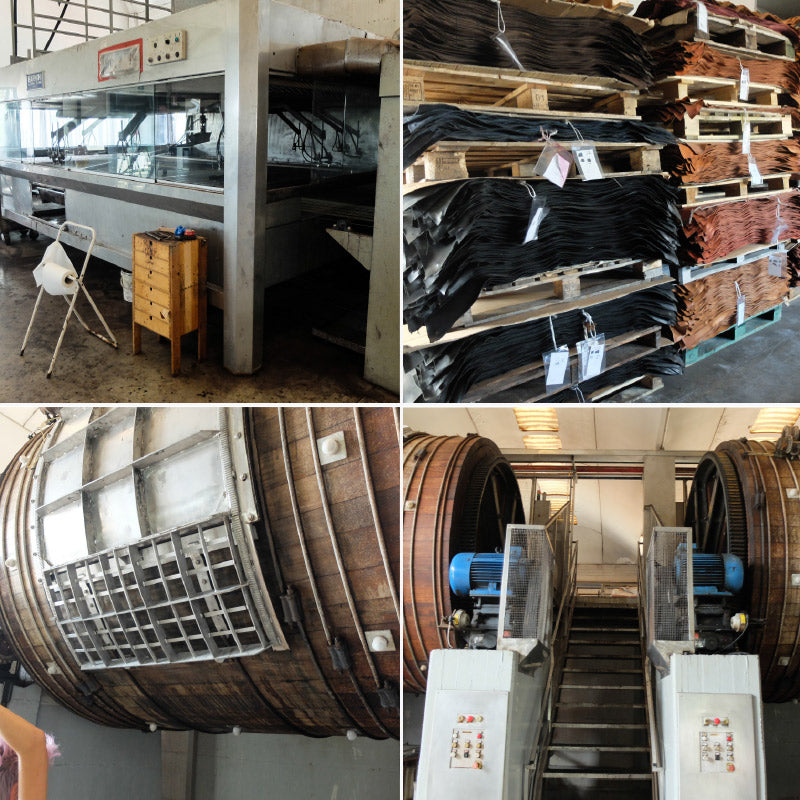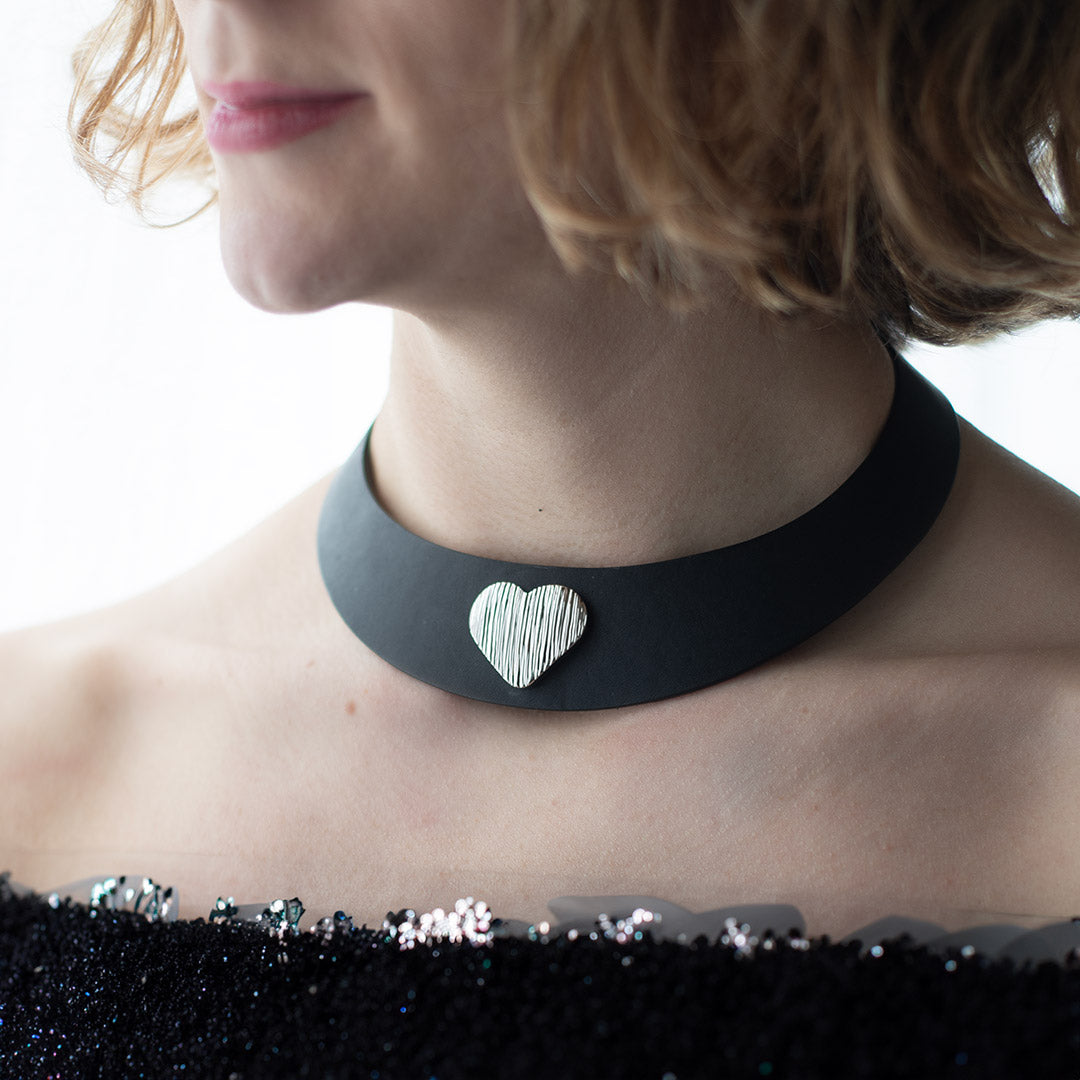
Leather is the raw material and when we talk about our products it is now understood that it is vegetable tanned. Natural, organic and produced according to the operating protocols of the Italian Vegetable Tanned Genuine Leather Consortium .

We have already covered the characteristics of this leather and its history in another article , but today we want to talk about how and why its color transforms and changes over time and with use.
Let's make a premise: Leather is above all a natural raw material, and for this reason we firmly believe that it should be used as much as possible in its genuineness, as it appears, and that its intrinsic characteristics should be enhanced, but to do this you must first learn to know and appreciate it.
Thanks to the know-how that the Tuscan master tanners have consolidated over the centuries, it has been possible to preserve and at the same time develop an ancient processing method unique in its kind: vegetable tanning.
This method is still recognized as an Italian excellence because it is the only procedure that allows the leather to remain intact in its peculiarities and to continue to experience the transformations that only time and use can give.

Coloring in vegetable tanning
But let's get straight to the point: how does coloring occur in vegetable tanning?
In the tanning in the barrels, vegetable tannins from trees and plants are used, which allow to limit allergies, have no contraindications for health and have a very low environmental impact, only later will the leather be pigmented with aniline always in the barrels Wood. This coloring process ensures that the leather maintains its warm tones, which with time, use and exposure to sunlight will tend to resurface on the surface causing the product's color to change.
How can the color change?
The chromatic changes remain very different from each other and can only be evaluated by considering several variables: frequency of use, brightness, consecutive hours of light or thermal exposure, absorbed humidity. Furthermore, the different colors will respond differently, producing contrasting changes and transformations between them.
Obviously vegetable tanned leather being first of all a natural material , worked keeping its purity intact, it can vary in structure and characteristics from product to product and from collection to collection.
We believe these variations are a hallmark of uniqueness and beauty and not a fault, and we encourage our customers to do the same. We like to observe it in its evolution and how with the different uses, from person to person, your leather object will tend to transform over time .
Can usury be avoided?
This type of leather is a resistant material, which can last for years, but it too has limits, for example for greater duration and less wear, as far as possible, it should be avoided to expose it to high temperatures or direct contact with wet surfaces.
Is there a difference from color to color?
The results conducted in the laboratory show that different colors correspond to different changes, for example it has been noted that brown is more stable, while the natural color tends to change more. The transformations of yellow, blue, green and orange are different and gradual .
The transformations deriving from the aging process show how the chromatic degradation decreases with the passage of time, but in all cases, what prevails is the dominant character of the tannin and the natural colors which in the shades of brown tend to resurface.
What if he accidentally gets wet?
Our advice is to let it dry at room temperature, avoiding heat sources and possibly to hydrate it using a neutral cream.





































































































